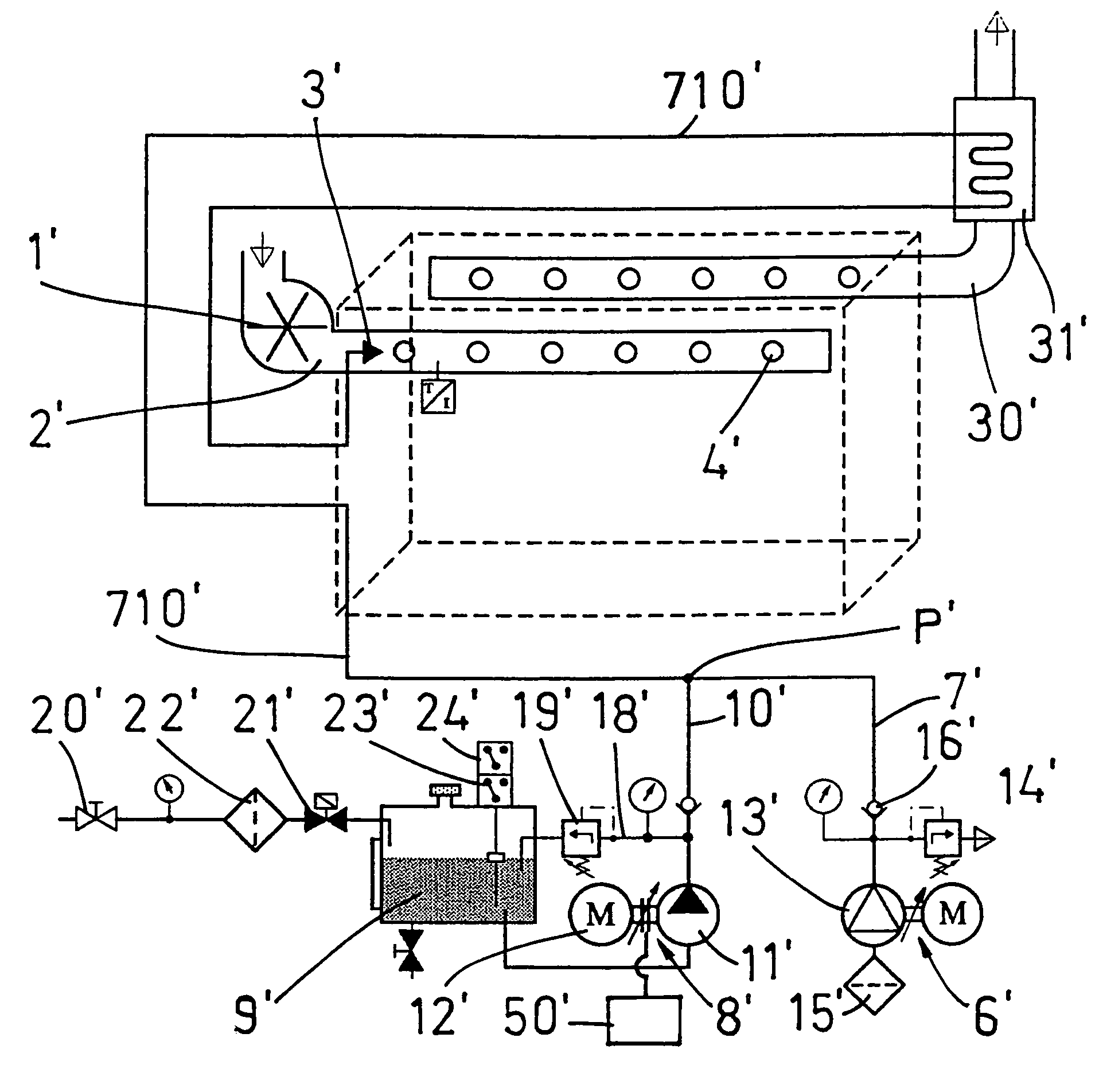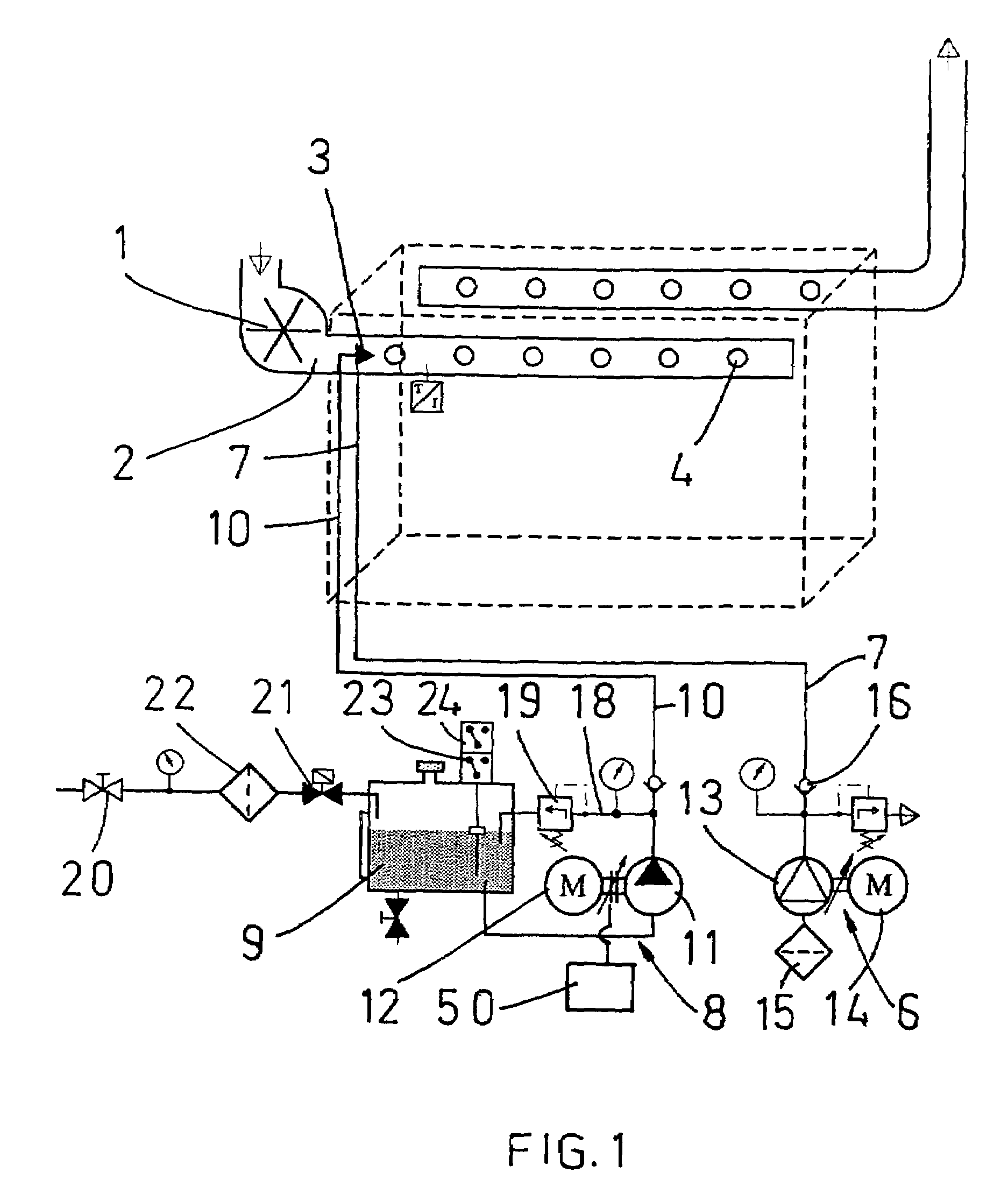Method and apparatus for reducing combustion engine emissions
a technology of combustion engine and combustion engine, which is applied in the direction of mechanical equipment, machines/engines, separation processes, etc., can solve the problems of soot/carbon emissions, most harmful to the environment, and the diesel engines of ships are great polluters of air, etc., and achieves the effect of reducing nitrogen emissions, simple structure and mounting
- Summary
- Abstract
- Description
- Claims
- Application Information
AI Technical Summary
Benefits of technology
Problems solved by technology
Method used
Image
Examples
Embodiment Construction
[0029]FIG. 1 shows a large 6-cylinder diesel engine of a ship. The engine is provided with a charger 1, which feeds pressurized combustion air into suction pipelines 2. In order to reduce nitrogen emissions from the engine the suction pipelines 2 are provided with a spray head 3, which is arranged to feed a mixture of gas and water mist into the suction manifold, wherefrom said mixture passes into the engine cylinders 4. Because the mixture of gas and aqueous mist enters the cylinders, the combustion temperature in the cylinders 4 decreases. The combustion temperature decreases efficiently both when the engine runs at full power and when it runs at partial power. The reason why the combustion temperature decreases efficiently also when the engine runs at partial power is that the spray head 3 also feeds gas into the suction pipelines. Gas feeding reduces the size of water drops, which is important, so that the water drops would vaporize easily and quickly also when the engine runs a...
PUM
 Login to View More
Login to View More Abstract
Description
Claims
Application Information
 Login to View More
Login to View More - R&D
- Intellectual Property
- Life Sciences
- Materials
- Tech Scout
- Unparalleled Data Quality
- Higher Quality Content
- 60% Fewer Hallucinations
Browse by: Latest US Patents, China's latest patents, Technical Efficacy Thesaurus, Application Domain, Technology Topic, Popular Technical Reports.
© 2025 PatSnap. All rights reserved.Legal|Privacy policy|Modern Slavery Act Transparency Statement|Sitemap|About US| Contact US: help@patsnap.com



